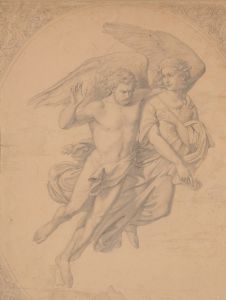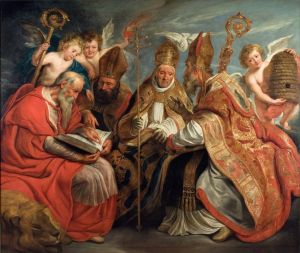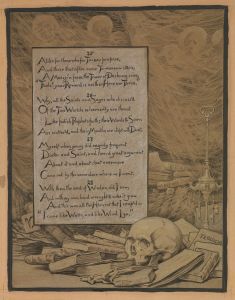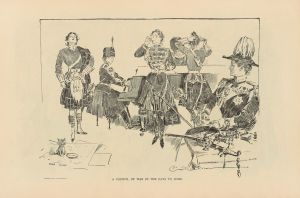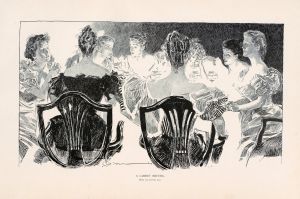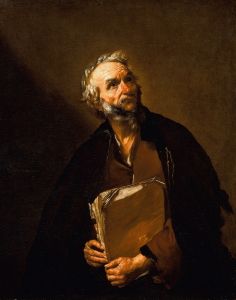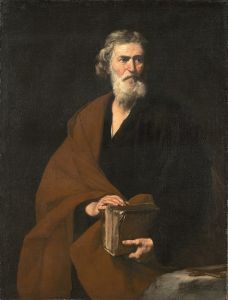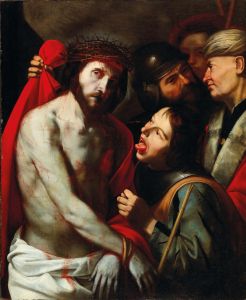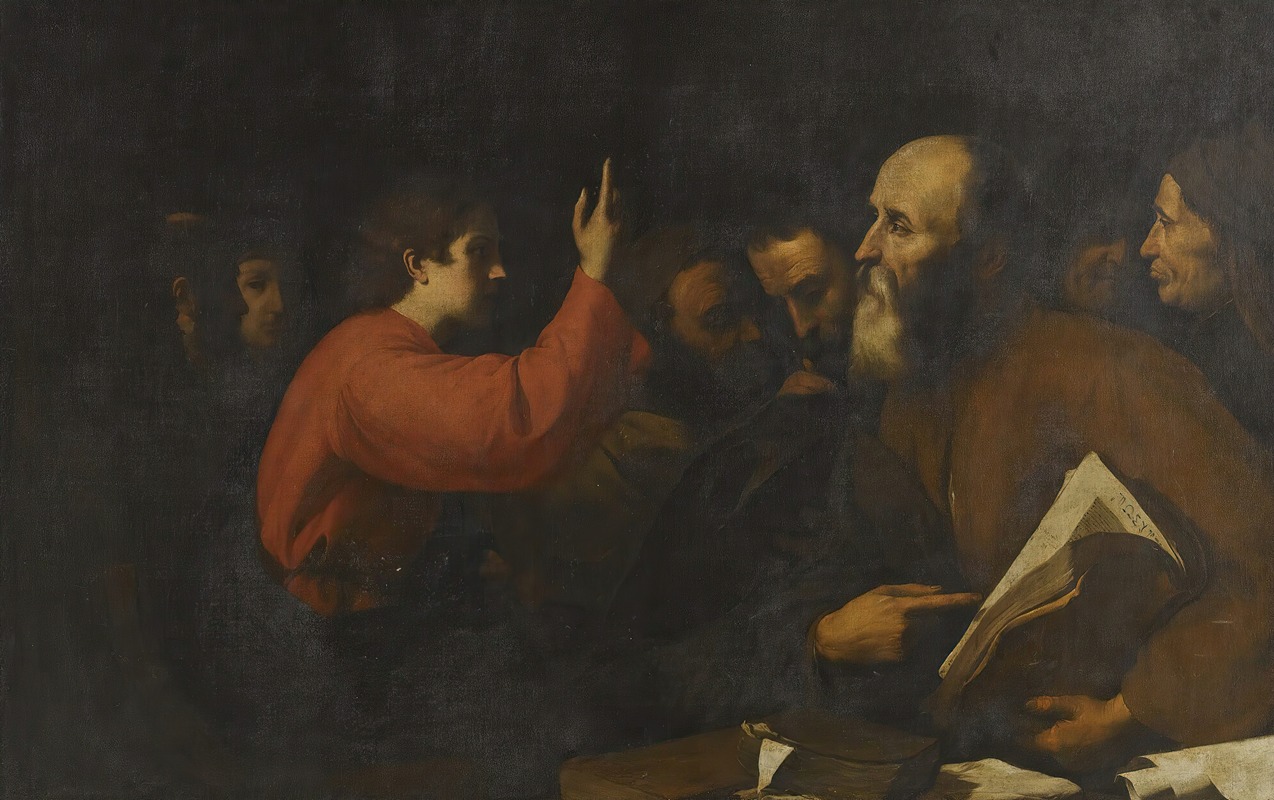
Christ Among The Doctors In The Temple
A hand-painted replica of Jusepe de Ribera’s masterpiece Christ Among The Doctors In The Temple, meticulously crafted by professional artists to capture the true essence of the original. Each piece is created with museum-quality canvas and rare mineral pigments, carefully painted by experienced artists with delicate brushstrokes and rich, layered colors to perfectly recreate the texture of the original artwork. Unlike machine-printed reproductions, this hand-painted version brings the painting to life, infused with the artist’s emotions and skill in every stroke. Whether for personal collection or home decoration, it instantly elevates the artistic atmosphere of any space.
"Christ Among The Doctors In The Temple" is a painting by the Spanish artist Jusepe de Ribera, also known as José de Ribera. Ribera was a prominent painter and printmaker of the Spanish Baroque period, renowned for his dramatic use of chiaroscuro and realistic depiction of human figures. He was born in 1591 in Xàtiva, Spain, and spent most of his career in Italy, particularly in Naples, where he became a leading figure in the Neapolitan school of painting.
The painting "Christ Among The Doctors In The Temple" depicts a biblical scene from the Gospel of Luke, where the young Jesus is found in the Temple of Jerusalem, engaging in discussion with the Jewish teachers. This event is significant in Christian theology as it highlights Jesus' early wisdom and understanding of religious teachings, even at the age of twelve.
Ribera's interpretation of this scene is characteristic of his style, which often includes intense emotional expressions and a strong contrast between light and shadow. The composition typically centers on the figure of Jesus, who is depicted with a serene and composed demeanor, contrasting with the animated and sometimes perplexed expressions of the doctors surrounding him. This contrast serves to emphasize Jesus' divine wisdom and authority.
The painting is noted for its detailed rendering of the figures' facial expressions and gestures, which convey a sense of realism and immediacy. Ribera's use of chiaroscuro—a technique that employs stark contrasts between light and dark—enhances the dramatic effect of the scene, drawing the viewer's attention to the central figure of Christ and the reactions of the doctors.
Ribera's work is often associated with the tenebrist style, which is characterized by the use of deep shadows and a limited light source to create a dramatic effect. This style was influenced by the works of Caravaggio, whose impact on Ribera is evident in the naturalism and intensity of his compositions.
"Christ Among The Doctors In The Temple" reflects Ribera's mastery of this style and his ability to convey complex theological themes through vivid and dynamic imagery. The painting is a testament to Ribera's skill in capturing the human form and emotion, as well as his deep engagement with religious subject matter.
While specific details about the commission or the current location of this particular painting by Ribera might not be widely documented, his works are held in high esteem and can be found in major art collections and museums around the world. Ribera's influence on the Baroque period and his contribution to the development of European art remain significant, and "Christ Among The Doctors In The Temple" is a fine example of his artistic legacy.





